Classic Movie Review: 'A Quiet Place' 2018
John Krasinski, Beck and Woods, kicked off an unexpected horror franchise with A Quiet Place in 2018.
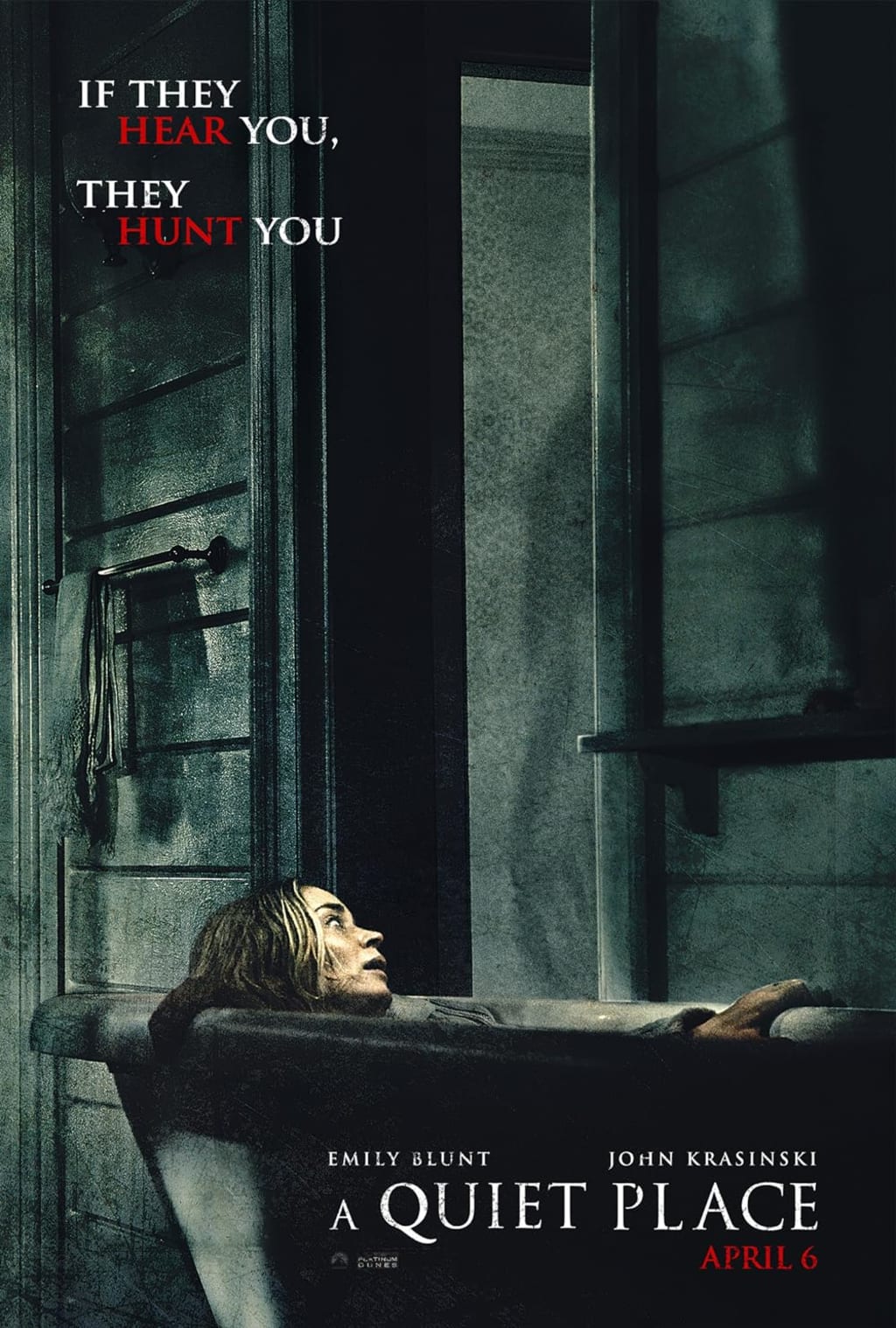
A Quiet Place (2018)
Directed by John Krasinski
Written by Brian Woods, Scott Beck, John Krasinski
Starring John Krasinski, Emily Blunt, Millicent Simmonds, Noah Jupe
Release Date April 16th, 2018
Published June 28th, 2024
Legendary filmmaker Alfred Hitchcock once offered a brilliant dissection of suspense in movies. Imagine a man carrying a bomb. It's in a briefcase. No one other than the man carrying the briefcase knows that there is a bomb inside. We, the audience, know the bomb is there because we watched the man carrying the briefcase, carefully and meticulously assemble and place the bomb in the briefcase. The excitement is that a bomb is going to go off and cause death, destruction and chaos. But, suspense, is watching the man build the bomb, place it in the briefcase, walk gingerly, awkwardly and very carefully to the place where the bomb is to be placed.
The tension continues to build as the man places the briefcase under a bench in a park filled with people. The suspense mounts when the man leaves, leaving behind the briefcase, precariously positioned beneath the bench. The tension grows to unbearable levels as the bomber tries to leave, only to be stopped by s0meone who mentions that he forgot his briefcase. The bomber is sweating and stammering, he needs to get away but he doesn't want anyone to know about the bomb. The ticking of the timer is evident to us and to the bomber, he has mere moments to get himself safely away from the explosion that is set to kill anyone close to it. What does he do?
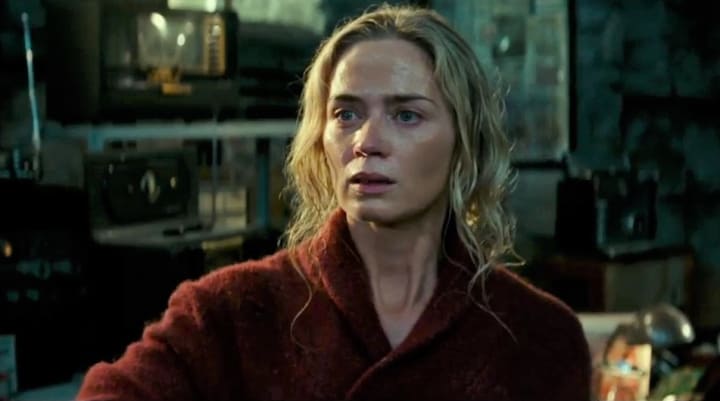
As exciting as a bomb blast in a movie is or can be, there is something even more invigorating about a great piece of suspense. The chest tightening, pulse pounding feeling of anticipating what is going to happen is where Hitchcock thrived as a filmmaker. He loved exploring tension and suspense as if they were a secret he was sharing with the audience. We are made complicit in the act of suspense, suspended as we are from intervening to try and stop the bomb going off, we are forced into the perspective of the bomber, the only person who shares this secret with us. We may not want to see people killed in a bombing but we are relieved of our guilt because we can do nothing to prevent it. Our very morality may be compromised but the tension is, we don't want the bomb to go off, but we are expecting the bomb to go off.
The 2018 horror movie, A Quiet Place, operates in this space. The film contains several sequences of set up and payoff pieces of tension. It's incredibly effective, if a tad too effective at times. The film has so much tension and suspense that it can prove to be exhausting. So much much tension and relief, tension and relief, tension and relief, can leave audiences spent. As in my case, by the time A Quiet Place reached its ending, I was so exhausted that I didn't feel the triumph that I believe the movie was intending to communicate. Regardless of that feeling of being spent and too tired to care, I still enjoy A Quiet Place and I want to enthuse a little about my favorite pieces of suspense in the film. Two sequences in A Quiet Place brilliantly and effectively operate in that Hitchcock space of the tension between set up and pay off.
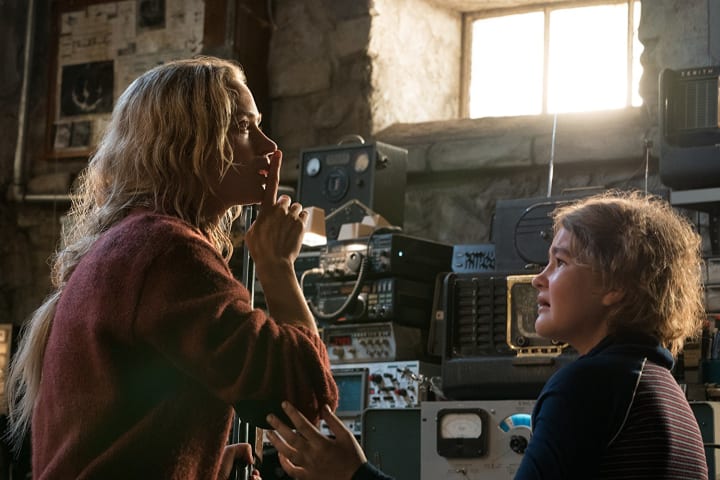
But first, A Quiet Place stars John Krasinski and Emily Blunt as Lee and Evelyn Abbott, husband and wife and parents of three kids in a post-apocalyptic Midwestern America. We meet the family 89 days into this seeming apocalypse as they are gathering supplies in the dusty remains of a pharmacy. Their silence is unexplained. Visually, the world is an empty vessel. Cars and buildings sit empty, bombed out, as if a massive conflict has occurred that left no one behind. The family communicates via sign language. This visual form of communication tells us that sound is dangerous. The family is exceptionally careful not to make any noise. No exposition is needed, visual storytelling is laying the groundwork for the suspense.
The camera falls on a toy rocket. The family's youngest boy, aside from the baby mom is carrying, is attracted to the rocket. He hasn't had a toy that made noise in a very long time. He's also a small child who hasn't quite grasped the gravity and consequences of sound in this post-apocalyptic world. All he knows is that mom and dad do not want him making noise and are not allowing him to have this noisy dangerous toy. The boy's older sibling feels sorry for him and thus takes the toy, removes the batteries, and gives it to the youngest child despite their parents objection. What the older sibling doesn't see is their young sibling grabbing the batteries to place them back into the rocket.
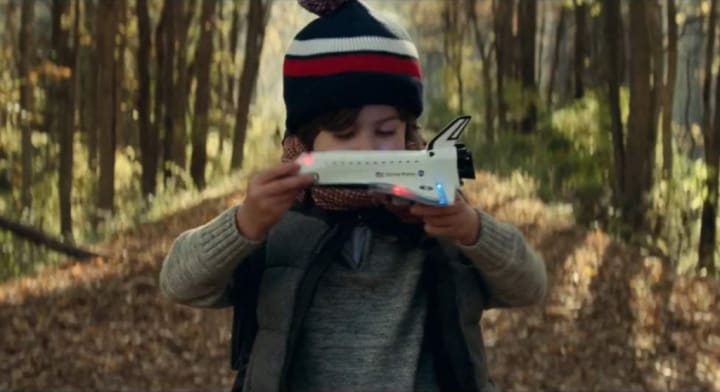
The toy rocket is the bomb in the briefcase. It's a matter of time to when this bomb will go off. Once the boy has the bomb the clock of suspense begins to tick. Our heart begins to race as the boy pauses to contemplate and play with his new toy, intending to remain silent but unaware that the toy does work and has tacky moving parts that are potentially hazardous in a world where sound kills. As the child holds the toy, his family is walking ahead of him, complacent to the child and toy. Tick, tick, tick, BOOM! The toy rocket is accidentally triggered to make noise and with a horrifying suddenness, the child is snatched by an unseen monster before the toy can even hit the ground. The bomb has gone off, the explosion culminates and soon relieves the tension, leaving behind an anguished agony.
It's a brilliant sequence that lives and breathes in the space between the toy being given to the child and the child playing with the toy minutes later. We are given so much visual and auditory information. But the full illustration of the danger of noise only comes when the toy makes a loud sound and a monstrous yelp is heard, and the child is gone in seconds before we have a chance to see the monster that snatched him. Krasinski's Lee tries to run to his son but is also trying not to make any noise to draw the attention to the rest of his family. His failed, silent rescue attempt is haunting, brutal, and fraught with grief, anger, and pitiful sadness. You can't breathe until the child is gone. You are gripped with suspense, briefly terrified by the sound, and relieved though horrified in the aftermath. You can breathe again but it's the ragged breath of someone recently traumatized.
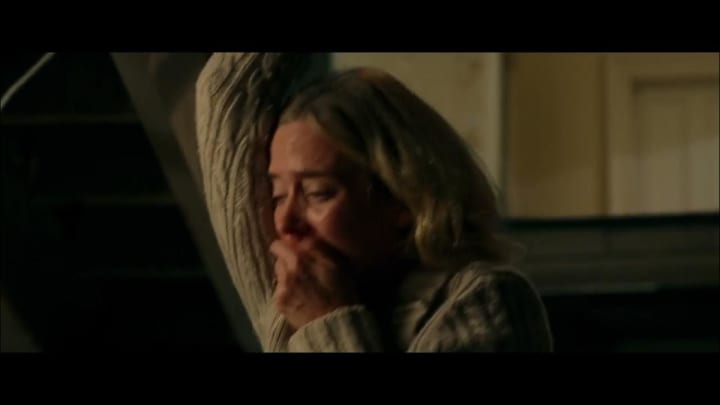
The next great sequence is much simpler but no less fraught. In the family's basement fortress, under their rural farmhouse, there is a set of old wooden stairs. Visual attention is called to a nail that has come loose and is now sticking out of one of the stairs. The visual allusions to the nail repeat a few times as people descend the stairs and narrowly miss stepping on the nail. The nail is the bomb, stepping on it is the bomb being triggered, the explosion is if the person stepping on the nail screams in pain, thus triggering the monsters to arrive. It's another tremendous piece of visual storytelling. The universe is established where noise gets you killed. Stepping on a nail is an excruciating pain. We don't need dialogue to explain this. The bomb is a threat when it is shown. People narrowly avoiding stepping on it ratchets the tension further as your muscles tighten and relax with every near step. Finally, a character steps on the nail and the bomb is triggered.
This is a motif in A Quiet Place and it does become exhausting by the end. But you cannot deny the effectiveness of the filmmaking. It's classic Hitchcockian suspense. It's simple in the set up and payoff. It's elevated by smart filmmaking choices, well motivated camera and editing decisions. Director John Krasinski has to artfully show us the nail. We make the visual connection in our mind between the nail and pain and a scream in pain from stepping on a nail. We piece together a scream with the previous information about how noise brings forth the deadly monsters. The suspense, the pulse racing, heart-pounding, excitement is put into our minds by the skilled visual filmmaking. This is great stuff. It's what makes A Quiet Place so successful. This clever yet simplistic style of set up and payoff is elevated to the realm of iconic horror art by great direction, editing, and acting.

A Quiet Place: Day One is the headline movie for the next I Hate Critics Movie Review Podcast. Myself and my co-host, Jeff Lassiter, will be breaking down all three movies in the A Quiet Place franchise and talking about its place in horror and popular culture. You can listen to the I Hate Critics Movie Review Podcast wherever you enjoy listening to podcasts. We talk about new movies in theaters and a classic that relates to either the big new movie of the week or that has some relevance to modern pop culture topics. Please check out the I Hate Critics Movie Review Podcast and share it with friends.
Find my archive of more than 20 years and more than 2000 movie reviews at SeanattheMovies.blogspot.com. Find my modern review archive on my Vocal Profile, linked here. Follow me on Twitter at PodcastSean. Follow the archive blog on Twitter at SeanattheMovies. Listen to me talk about movies on the I Hate Critics Movie Review Podcast. If you have enjoyed what you have read, consider subscribing to my writing on Vocal. If you'd like to support my writing, you can do so by making a monthly pledge or by leaving a one-time tip. Thanks!
About the Creator
Sean Patrick
Hello, my name is Sean Patrick He/Him, and I am a film critic and podcast host for the I Hate Critics Movie Review Podcast I am a voting member of the Critics Choice Association, the group behind the annual Critics Choice Awards.
Enjoyed the story? Support the Creator.
Subscribe for free to receive all their stories in your feed. You could also pledge your support or give them a one-off tip, letting them know you appreciate their work.


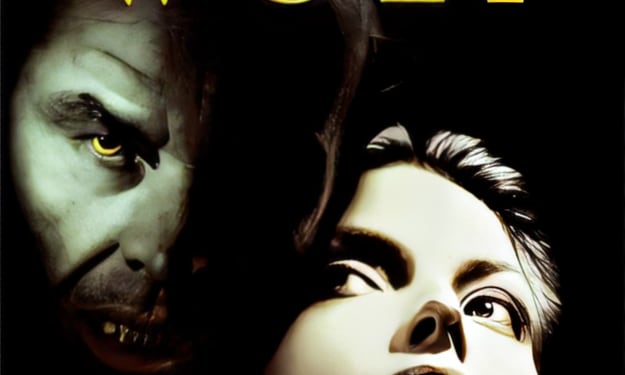

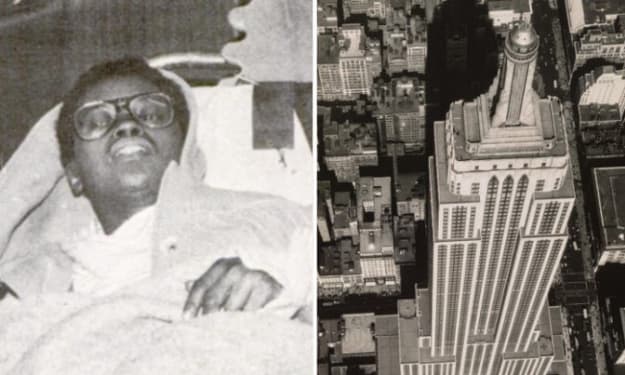

Comments
There are no comments for this story
Be the first to respond and start the conversation.